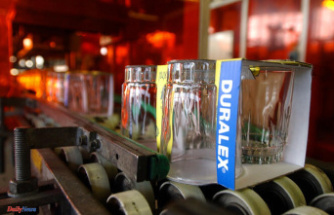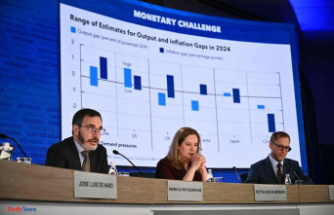Due to several factors, Kevin DeMeritt, founder and chairman of Los Angeles-based precious metals firm Lear Capital, expects gold — and other physical precious metal assets — will have a dynamic year.
In 2022, economic challenges significantly influenced investors’ outlook; that may also occur in 2023, according to DeMeritt — which could help the overall interest in investing in gold increase.
“As we start to see more financial instabilities happen around the country — and probably around the world — demand from central banks could intensify, along with demand from institutional and individual investors,” he says.
Understanding Gold’s Position in the Market
Inflation — now at about 5%, according to the most recent Bureau of Labor Statistics data — is lower than the 9% high it reached last year, but still above the 2% target the Federal Reserve has identified, indicating we may have more months ahead of attempts to reduce it.
Since March 2022, the Fed’s Federal Open Market Committee has enacted a series of rate hikes, moving the target range for the federal funds rate from 0 to 0.25% initially to, by March 2023, 4.75% to 5% — changes that were intended to help curb inflation.
At the FOMC’s March meeting, officials — who in December had estimated inflation would be 3.5% in 2023 — raised their median core personal consumption expenditures inflation projection for the year to 3.6%. Their expectation for 2024 also increased from 2.5% to 2.6%.
Since historically, gold prices have trended upward during periods of high inflation, if the journey to reach 2% takes some time — which seems probable — Kevin DeMeritt says it could help spur investments in gold, which is often seen as an inflationary buffer.
“Obviously, the big [influence] right now is inflation,” he says. “You’re starting to see banks fail. I would suspect that, because interest rates are so high, you will probably start to see other businesses have problems. You’re [already] seeing consumers with late payments on their credit cards, their car payments; as that trickles through the economy, it turns, usually, into a recession. As people look to hedge against higher and higher interest rates, precious metals [interest] should pick up.”
The full effects of a number of key global events — such as the conflict between Russia and Ukraine, which has prompted widespread supply chain issues in some areas of the economy — are still unfolding; this might also play a role in determining the demand for gold.
“The economic uncertainty right now is going to be a big factor,” Kevin DeMeritt says. “Gold is typically used as a safe haven during recessions, market volatility, and war. When investors are worried about the economy — like we’re seeing now with bank failures or the war in Ukraine — usually you get more people turning to gold, which can drive up its price. We’re starting to see that more and more.”
The U.S. dollar, which is currently fairly high, could also influence gold’s value in the near future.
“Gold is priced in U.S. dollars, so changes in the exchange rate between the dollar and other currencies can have an impact on [its] price,” Kevin DeMeritt says. “When the dollar weakens — [which] I believe it will, as we enter [the] recession I think is coming this year — the price of gold tends to rise even more dramatically.”
DeMeritt anticipates the interest in gold will notably increase during the next few years.
“Every investment goes through cycles,” the Lear Capital founder says. “I believe this cycle, where people are nervous about the economy and what's happening politically around the world, will last 36 to 48 months. Inflation [we] haven’t seen since the ’70s, bank failures, a recession — all of the things that would usually [result in a rise] in the precious metals market are [present].”
Focusing on Future Returns
Stocks can surge and dip, based on the perceived threat to companies’ marketability and other factors. However, due to gold, platinum, and silver’s limited availability, their inherent value makes them generally less prone to the economic fluctuations that can profoundly affect other assets.
Gold, silver, and platinum’s individual applicability has also contributed to interest in the metals. As a crucial component in catalytic converters that are used in vehicles, platinum, for instance, remains very much in demand.
“It’s a fairly versatile metal with a lot of different industrial applications,” DeMeritt says. “Most come in the form of a catalytic converter, which is used to reduce emissions in automobiles. I don’t think we're going to have enough electric cars to take that [need] away for the next 10 or 15 years.”
Silver, in particular, has seen a popularity boost in recent years, partially because it’s used in electronic systems — including solar panels. Silver-based solar photovoltaic power use, involving the conversion of sunlight to electricity, is now the top source of green electricity, according to the
nonprofit Silver Institute association.
Gold is utilized in numerous items, too, ranging from jewelry to electronics, giving it a continued demand. For the most part, gold prices have performed steadily for roughly 200 years, even despite past political and economic challenges, according to the National Mining Association’s records — which indicate gold actually began rapidly rising in value in the 1970s, after several decades of moderate gains.
At times, gold’s price increased significantly — such as its 147% rise in 1980, when interest rates in the U.S. were escalating to historic highs of above 15%, according to a Lear Capital report.
“If you look at gold, it’s outperformed the stock market since 2000,” Kevin DeMeritt says. “Gold usually has an inverse relationship to stocks and other types of assets.”
To take advantage of any price increases precious metal assets experience in the future, investors may want to consider incorporating gold or other precious metals into their portfolio. (Lear Capital’s IRA portfolio comparison calculator can illustrate what effect diversifying a portfolio by including precious metals can potentially have.)
While investors might be bracing for losses in 2023 — and beyond — due to concern about an impending recession and other economic scenarios, physical precious metal assets could ultimately end up being on a different performance path.
“Some people are going to be surprised,” Kevin DeMeritt says. “You might just wake up to $3,500 [or] $3,700 gold [prices] in the next 24 [to] 36 months.”
[EB1]https://www.federalreserve.gov/monetarypolicy/files/fomcprojtabl20221214.pdf
[EB2]This sentence is reworded slightly from:
And I believe this cycle will last 36 to 48 months where people are nervous about the economy and nervous about what's happening politically around the world, and so on and so forth.
Date Of Update: 05 May 2023, 02:34











